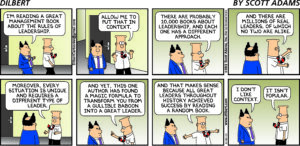The SCARF model for understanding culture: Part 3
Last week I discussed the first two elements of the SCARF model for understanding corporate culture: Status and Certainty. Here…

Last week I discussed the first two elements of the SCARF model for understanding corporate culture: Status and Certainty. Here…

As I prepare to publish my own book about leadership next year (Update: The CEO Tightrope published in September 2014), I…

Last week I introduced the SCARF model as a way for CEOs to understand and influence their company cultures. Humans…

CEOs these days are given one term in office. If they’re very successful, they might get four more years. John…

Over-confident CEOs can put companies at risk, research shows CEOs need to demonstrate strong leadership and good decision-making skills, but…

Do employees always react to company news in the way you expect? If you have been a CEO or even…